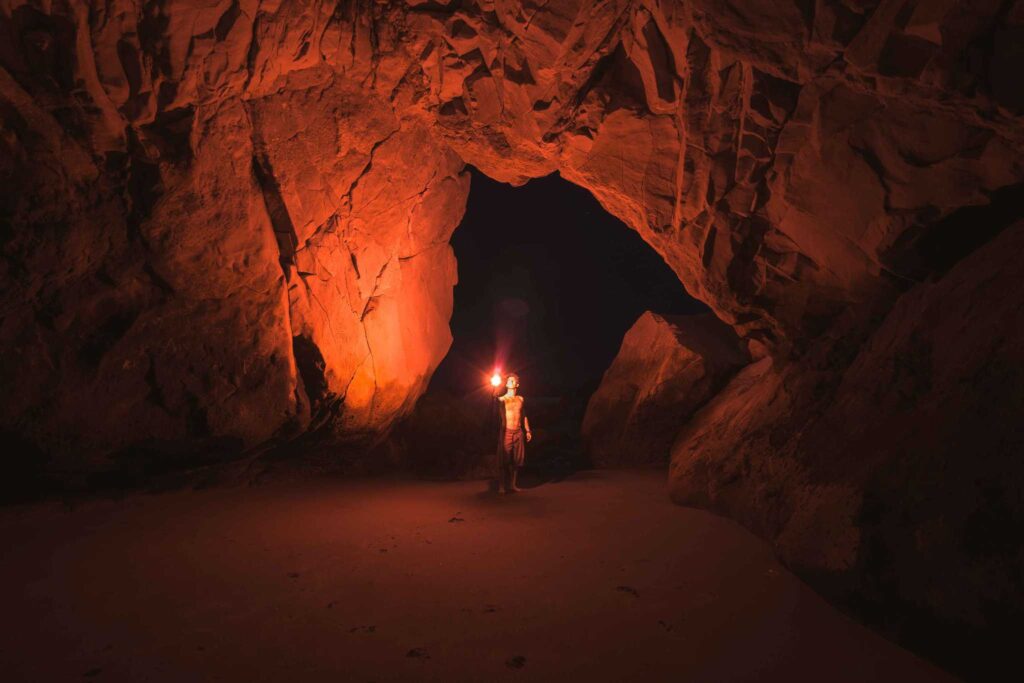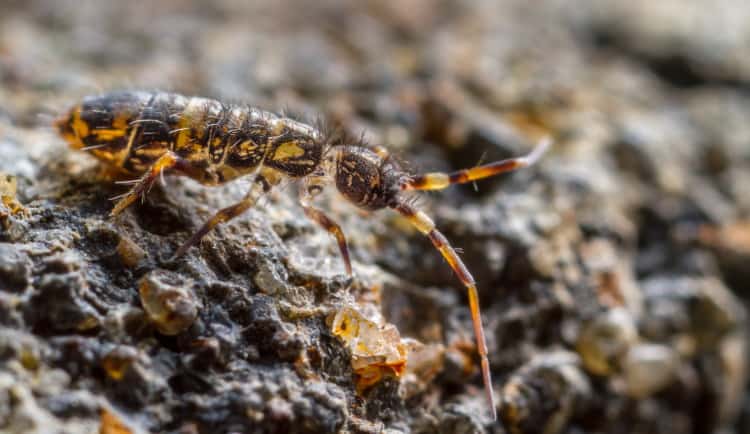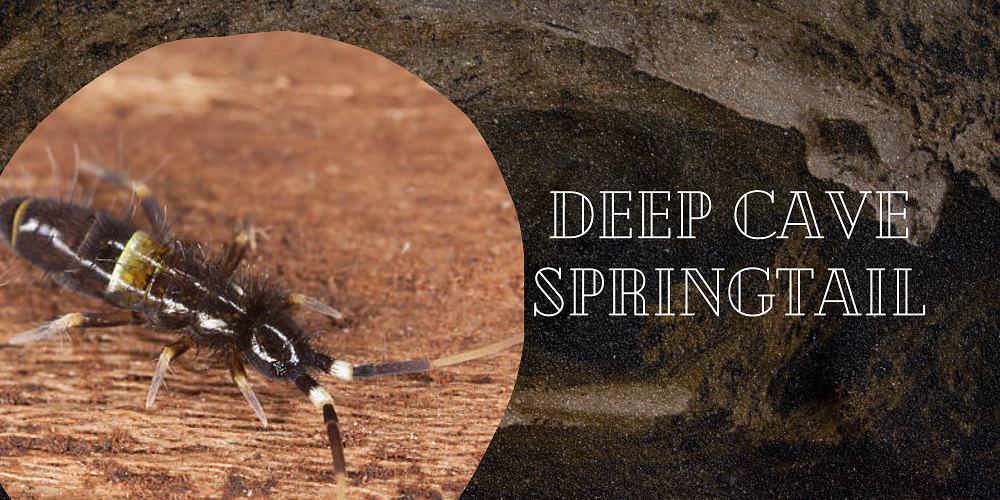New places lead to new discoveries. One such discovery is discussed here. Deep Cave Springtails are the deepest living creature found on Earth. They were found 1980 meters below the earth’s surface in the world’s deepest cave.
History
This creature was found in 2010 during an expedition by the Ibero-Russian team of explorers who were called CaveXTeam in a cave that was very deeply hidden. The cave was found in the 1960s and is called the Krubera. It is located in Arabika Massif in the Western Caucasus mountain range which is near the black sea. This cave was found to be one of the deepest caves on earth.
The team didn’t expect to find such a creature so deep on earth. So they wanted to capture it and they used cheese to lure it into a trap.
Deep Cave Springtail
Deep Cave springtail is an arthropod called Plutomurus Ortobalaganensis. It is classified as a hexapod with a distinct number of legs and an external skeleton. These belong to the order Collembola. They are not identified as insects by scientists. So, They are generally referred to as Hexapods.
This type of springtail that dwells in deep caves is often found in white color which reduced furca and little to no eyes. They live in litter or soil.
The kind of springtails that live in the open tend to be colorful and pretty.

Deep cave springtails usually shed their skin once a week, even after they reach maturity and they are tiny in size. They need to have an empty stomach before shedding their skin because female insects lose some part of their stomach lining along with the skin. Their lining contains sperms from the previous mating. During the shedding process, they lose the sperms too. Their younger ones shed their skin about eight to thirteen times before they reach the age of their sexual maturity.
These hexapods feed on fungi and bacteria from rotting matter. Some species eat living trees and some others are carnivorous who eat nematodes or others of their kind. Some feed on algae and tree bark. However, you will always find them near rotting vegetables or other organic matter.
They have a strange ability to jump great distances. They are very tiny but they jump quite far. This is possible because of their furcular extensions. Deep cave springtail have these strange appendages on their stomach, when they jump, these appendages contract and let them go forward but in a very uncontrolled manner.
All springtails require moisture to survive as their body absorbs moisture. This is why they are found in moist places like caves. These creatures are also very significant in maintaining the ecosystem of the place.
Reproduction
The males of this species place their spermatophores in one place where the female finds them This place could be somewhere specific or sometimes it can be very random. Sometimes the males of deep cave springtail eat up other males and destroy their spermatophores and place their own in their place. There are some other species of springtails that go into courtship before placing their spermatophore.
Deep cave springtails mate in large numbers and that explains their occurrence in large numbers. An average female lays about 90 to 150 eggs in her lifetime. They require certain conditions to grow their eggs and a certain temperature which is usually available in caves.

Anatomy
The deep cave springtail looks greyish with black spots covering its body. It possesses long antennae called the chemoreceptors. It is eyeless.
Dealing with Darkness
Deep cave springtails, do not have any access to light as they live so deep within the caves so they don’t need to see. But they have huge antennae called the chemoreceptor. It helps them locate their food and other things. They have greyish skins that explain that they don’t have to camouflage or fight any predators. They have some black spots on their bodies that signify that might have been living this deep only in recent times. Usually, cave dwellers lose all of their colors as they don’t need them anymore. The color is used to attract mates, protection from the sun, and camouflage.
They are found very commonly and you can even buy tubs of them. They are great for soil as they feed on bacteria and fungi. Although they are considered pests in most societies they have their benefits.
Thoughts at Discovery

When deep cave springtails were discovered, it took a lot of work from the cavex team. The location of the cave was very remote and they had to go through a lot of hustle to make it to that place. It took them ten years to finally be able to locate them. They had to live with just snow as their source of water and food rations that they carried. They had no machines going that deep. It was all human work which was very difficult in the cold weather due to the risk of hypothermia.
The deepest land-dwelling creature before deep cave springtail is the silverfish which is a kind of scorpion that was found 920 meters deep. This one was found at least twice as deep.

Also read: Brown Praying Mantis
Conclusion
Their research made scientists rethink the way creatures inhabit the planet. Life can dwell in a lot more adverse conditions than you might think. Deep cave springtails live with almost no food and no life around them. they are still able to survive in those conditions. Hence what we normally perceive as appropriate conditions for organisms to sustain might be a lot wider than just that. Life is a lot richer and wider than we can find.
FAQ’s
-
Do sprigtails live in caves?
All springtails do not live in caves. Some of them reside in an open environment as well. It depends on the species of springtails. Deep cave sprigtails do live in caves. They live in very deep caves and sustain there with no light at all. They don’t even need eyes, they live that deep. However, you can find plenty of regular species of springtails that might even live in your garden.
-
What animals live in Krubera Cave?
There are twelve Arthropoda species found in the Krubera cave. Other than that they have Catops Cavicis Beetle and also the deep Cave springtail. Krubera Cave is actually a mountain system that starts at 2256 meters.
-
Where can I find Springtails in Australia?
You can find them in almost every part of Australia. They are found mostly near soil or land where the surface is moist. They will be found near rotting vegetable matter, rotting trees, under rocks, or barks of trees. Some of their species can even be found on the nests of ants and even termites.
-
What’s at the bottom of the deepest cave on earth?
The deepest cave on earth, Krubera has a sump at its bottom. A sump is a basin filled with water at the bottom of the cave. Most caves usually have dry twigs or sticks and they end there but Krubera is hard to reach and it is even harder to reach its bottom.
-
Are springtails insects?
Springtails are not identified as insects by scientists. It is a hexapod but that doesn’t mean that it lies under the class of insects. Insects can be called the close relatives of springtails.
